
University System of Maryland Chancellor William E. Kirwan, who announced in the spring his plans to step down, said this week that he will likely remain in his post at least through February as the search continues for his successor.

Pieris AG announced today the initiation of a Phase I clinical trial with PRS-080, an anti-hepcidin Anticalin® therapeutic protein designed to treat anemia. The trial is a placebo-controlled, single ascending dose evaluation of the compound's safety and tolerability in healthy volunteers. Conducted in Germany, the trial is underway and patients from the first cohort have been dosed.

Bedsores, diabetic ulcers and other chronic wounds cost the U.S. health care system $30 billion a year. Why? At least in part because the primary tool doctors and nurses use to track wounds is a basic ruler.
A ruler can measure the size of a wound, but does little to track other important qualities, such as changes in shape and tissue color. Consider that patients are usually cared for by a rotating team of nurses, who may each interpret a wound's appearance differently, and it's easier to see how so much money is spent tending to preventable (or at least treatable) conditions.
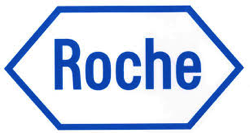
When it comes to the biggest investors in Research and Development (R&D) Swiss pharma top dogs Novartis and Roche have defended their positioning among the top ten companies worldwide – according to a recently published EU study.

The University of Maryland is now integrating the Lean LaunchPad® into standard innovation and entrepreneurship courses across all 12 colleges within the University. Over 44 classes have embedded the business model canvas and/or Customer Discovery including a year-long course taken by every single one of its bioengineering majors.

An advanced protective suit for healthcare workers who treat Ebola patients, devised by a Johns Hopkins team, has been selected as a winning design in a global competition aimed at quickly getting new tools into the field to combat this deadly disease.

Recent efforts between the University of Maryland (UMD) and Bethesda-based Weinberg Medical Physics LLC (WMP) have led to a new technique to magnetically deliver drug-carrying particles to hard-to-reach targets. The method has the potential to transform the way deep-tissue tumors and other diseases are treated.
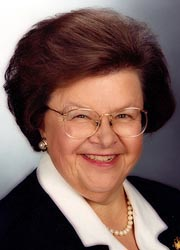
Chairwoman of the Senate Appropriations Committee and the Commerce, Justice, Science (CJS) Appropriations Subcommittee, today announced the Consolidated and Further Continuing Appropriations Act of 2015 provides increased funding to support American jobs and innovation, including funds for trade and economic development programs, and investment in scientific research and exploration.

Stem cell-derived blood and platelet products have the potential to meet critical medical needs. Remaining challenges exist in both the manufacturing process and additional discovery research. The manufacturing process needs to be made more efficient and cost-effective while assuring the effectiveness and safety of the blood products and enable their commercial viability. RFA-HL-15-022 supports R01 grants to address the basic or early translational research needs whereas RFA-HL-15-029 and RFA-HL-15-030 support small business awards to enable further advances in the manufacturing processes (tools and technologies) to take advantage of the existing knowledge and recent advances in the field to produce safe and functional blood and platelet products at reduced costs.

NHLBI is soliciting applications from small businesses to develop and validate novel in vitro human cell-based tools for predicting the responses of individual patients to cystic fibrosis transmembrane conductance regulator (CFTR)-directed therapeutics for cystic fibrosis (CF) lung disease. Proposed research projects are expected to focus on the development of highly innovative cell-based systems that recapitulate a patient-specific CFTR phenotype to create a personalized study platform to examine response to CFTR-directed therapeutics. The models developed must be based on live cells from humans harboring CFTR mutations associated with CF. While the primary goal of this initiative is to promote precision medicine and optimization of treatment at the personal level, it may also yield as a secondary benefit the ability to select appropriate treatments for CF at an earlier age.

ATCC, the premier global biological materials resource and standards organization, and LGC, a leading global producer and distributor of reference materials and proficiency testing (PT) programs, announce a new agreement to provide high-quality proficiency testing programs supporting the food, beverage, animal feed, and pharmaceutical quality control markets in the United States.
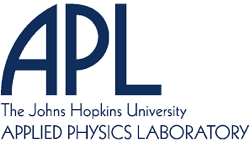
Johns Hopkins University’s Applied Physics Laboratory says it has experienced record growth for initiatives to move its scientific discoveries into the commercial sector in 2014.

San Diego-based BioMed Realty Trust Inc. has sold a 289,900-square-foot bio-manufacturing facility at 9911 Belward Campus Drive for $322.5 million to private equity firm GI Partners.
The selling price translates into a whopping $1,112 per square foot.

Aris Melissaratos is batting around the idea of making Stevenson University's Maryland Rising economic development forum an annual event.
Can you blame him? The first conference, held Monday, drew big-name speakers and generated a buzz other economic development confabs probably envy.

Funding and Research Opportunities
The following funding opportunity announcements from the NHLBI or other components of the National Institutes of Health, might be of interest:
Notices:
Request for Comments on the Draft NIH Policy on the Use of a Single Institutional Review Board for Multi-Site Research
(NOT-OD-15-026) Office of the Director, NIH
Reminder for the Extramural Scientific Community: Implementation of the Genomic Data Sharing Policy Begins January 25, 2015
(NOT-OD-15-027) Office of the Director, NIH
Notice of Office of Laboratory Animal Welfare Policy on Shared Animal Welfare Concerns
(NOT-OD-15-028) Office of the Director, NIH
NIH Modification to Guidance on Marking Changes in Resubmission Applications
(NOT-OD-15-030) Office of the Director, NIH
Update: New Biographical Sketch Format Required for NIH and AHRQ Grant Applications Submitted for Due Dates on or After May 25, 2015
(NOT-OD-15-032) Office of the Director, NIH
Notice of NHGRI Participation in PA-14-015 "Ruth L. Kirschstein NRSA Institutional Research Training Grants (Parent T32)" and Establishment of New Training Program in the Ethical, Legal and Social Implications of Genetic and Genomic Research
(NOT-HG-15-004)
National Human Genome Research Institute
Notice of Additional Due Date and Correction for RFA-HG-14-005 "Revisions to Add Biomedical Big Data Training to Active Institutional Training Grants (T32)"
(NOT-HG-15-009)
National Human Genome Research Institute
Notice of Change to Instructions for Senior/Key Personnel in the Overall and Project Components of PAR-13-316 "NHLBI Program Project Applications (P01)"
(NOT-HL-14-242)
National Heart, Lung, and Blood Institute
Request for Information (RFI): Challenges and Opportunities for Exploring and Understanding the Epitranscriptome
(NOT-RM-15-007)
NIH Roadmap Initiatives
Requests for Applications:
Human Cellular Models for Predicting Individual Responses to Cystic Fibrosis Transmembrane Conductance Regulator- Directed Therapeutics (R41)
(RFA-HL-15-026)
National Heart, Lung, and Blood Institute
Application Receipt Date(s): February 9, 2015 and November 9, 2015
Human Cellular Models for Predicting Individual Responses to Cystic Fibrosis Transmembrane Conductance Regulator- Directed Therapeutics (R43/R44)
(RFA-HL-15-027)
National Heart, Lung, and Blood Institute
Application Receipt Date(s): February 9, 2015; November 9, 2015; and November 9, 2016

Sometime soon a slender robot that looks like Casper the ghost and works like Skype on wheels may visit the bedside of an Ebola patient in West Africa, as a doctor nearby instantly transmits data to other researchers over a portable Wi-Fi network.

Falls Church-based Northrop Grumman Corp. has named Kenneth Bedingfield as its next chief financial officer.
Bedingfield will succeed James Palmer, who retires next year.
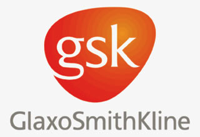
GlaxoSmithKline (GSK) has for the fourth consecutive time been ranked No 1 among global pharmaceutical companies assessed for their efforts to improve access to medicine in developing countries.
Released on 17th November by the Access to Medicine Foundation, the 2014 Access to Medicine (ATM) Index gives GSK a composite score of 3.3 out of a possible 5, following an in-depth evaluation of company activities in seven areas that are germane to enhancing access to medicine in developing countries.

A rich new Credit Suisse report, “Global Biotechnology – An Outlook for 2015,” was flush with cool data about trends in the biotech industry. The analysis lists out 10 key themes for 2015. Here’s the highlight reel:

Building a biotechnology startup is a lot like getting a private university education: To make progress, you have to get past the high-cost barrier to entry.
First and foremost, biotech requires expensive clinical studies and the use of state-of-the-art manufacturing facilities.

The U.S. Senate gave final passage on Saturday to an overdue spending bill for the 2015 fiscal year that provides modest increases for research, while holding education spending mostly flat.

As reported in a story earlier this morning, Oregon is preparing to join 15 states that have implemented rules to let businesses raise money through investment crowdfunding.

On October 9, 2014, the Investment Advisory Committee of the SEC issued its much awaited recommendations on the "Accredited Investor" definition of Regulation D of the '33 Act. This is in response to the SEC's Request for Comments on the definition of "Accredited Investor" in its release relating to Proposed Rules for Regulation D and Form D, which mainly related to general solicitation (for the full text of that release, see here).

Healthcare giant McKesson Corp. plans an aggressive move into venture capital funding for healthcare technology, expecting to commit several hundred million dollars to the effort over the next five to eight years, and hiring long-time venture capitalist Tom Rodgers as managing director of strategic venture capital operations.
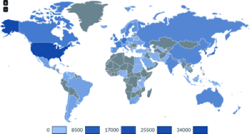
As an offshoot of PatentStat, I’ve assembled a set of graphs of patent inventor locations, focusing in 33 industry sectors.

Hospitals are on the hunt for new ideas to transform health care, and some are looking to reality television for inspiration.
Several health care institutions recently have tested TV’s “Shark Tank” approach to seeking out innovation — gathering a panel of pros to hear invention ideas from startups.

This source of strategic partnership offers a synergistic relationship that combines monetary and functional resources, capabilities, and core competencies for the purpose of technology commercialization. Entrepreneurs who are looking to accelerate the growth of their businesses often realize they can capture a greater bang for their buck when they collaborate with CVCs who offer value beyond the dollar.
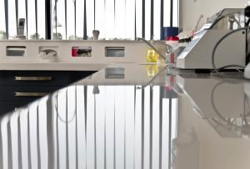
California has been associated with risk-taking, entrepreneurship and innovation since the Gold Rush. Today, California is still an innovation engine in such varied sectors as agriculture and the Internet. But only one homegrown industry can stake a claim as a leading contributor to our state’s economy and the health of people around the world: the life sciences sector.

Louis Brandeis famously characterized states as laboratories for democracy, but cities could be called labs for innovation or new practices. With far fewer resources than states or the federal government and responsibilities to people on a daily basis, cities have to be scrappy and creative when it comes to delivering services and running their operations.

A flood of new health care IT companies has been pouring into the U.S. health care market. The cause of this torrent: the recognition that as market and regulatory forces alter incentives in health care, IT companies will play a powerful role in combating the overemployment and declining productivity that has plagued this industry and in helping providers improve the quality of care.

How do you turn a genetic disorder into a money-making empire? Grumpy Cat has done it, but is it only acceptable because she is a funny looking feline instead of a human?